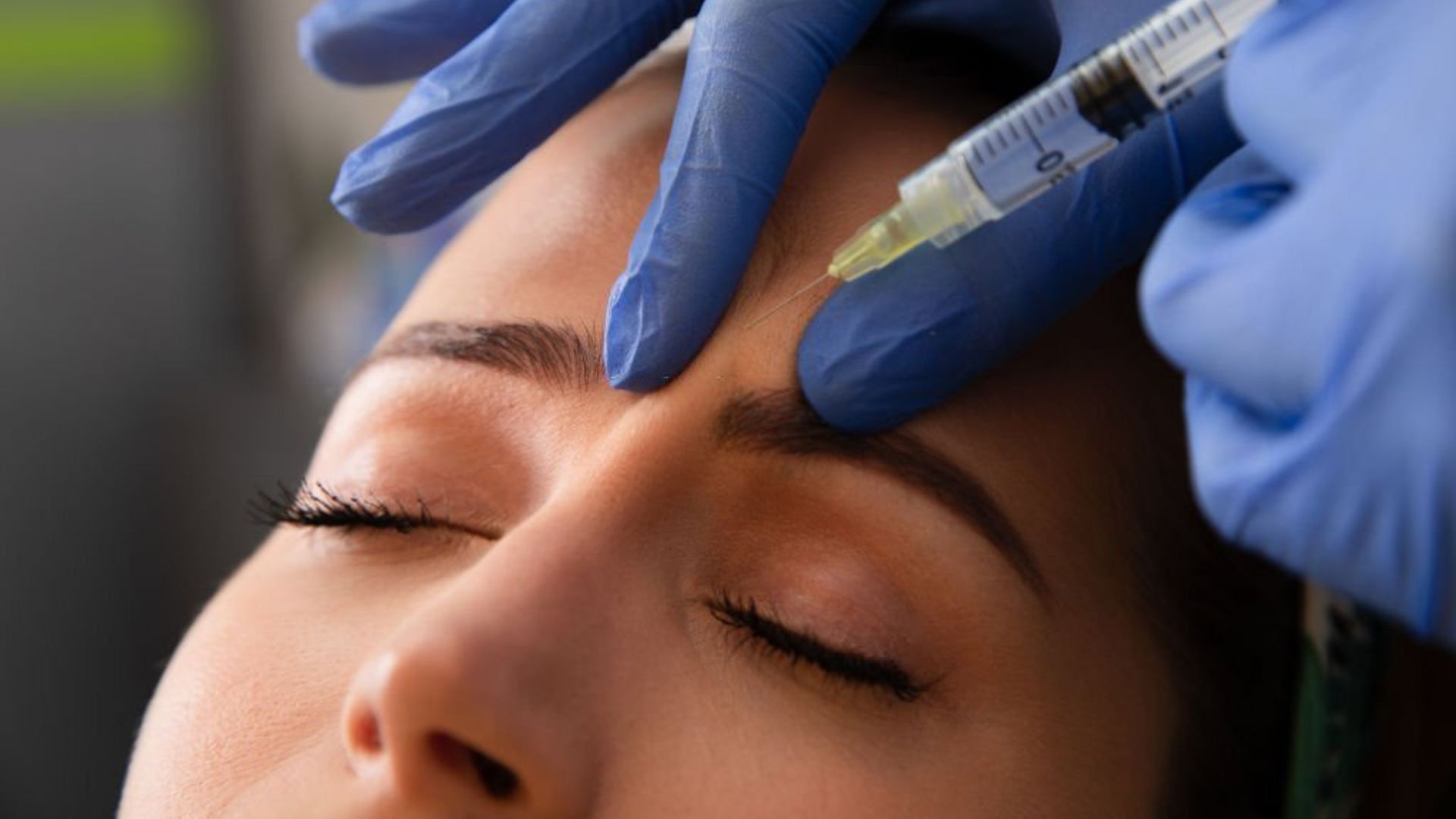
Osseous Surgery: Procedure, Benefits, and Alternatives
FitGAG is excited to present to you a comprehensive guide to Osseous Surgery! If you have been suffering from gum disease, or periodontal disease, and need a surgical solution, then this article is perfect for you. In this article, we will explain what Osseous Surgery is, how it works, the benefits and risks, the cost, and much more. Let’s get started!
What is Osseous Surgery?
Osseous Surgery, also known as Periodontal Surgery, is a surgical procedure that treats periodontal disease by removing the infected tissue and reshaping the bone. It is often necessary when non-surgical treatments, such as scaling and root planing, have failed to treat the disease. Osseous Surgery is a vital procedure to maintain good oral health and prevent further dental problems.
Explanation of Osseous Surgery
During the Osseous Surgery procedure, the periodontist will use special tools to remove the infected gum tissue and bacteria from the tooth’s root. The periodontist will then reshape the bone, so the gum can reattach to the tooth properly. This procedure is done under anesthesia and sedation, so patients are comfortable throughout the process.
Purpose of Osseous Surgery
Osseous Surgery is done to eliminate the bacteria that cause gum disease and to prevent further damage to the teeth and gums. The procedure helps to restore the health of the gum tissue and prevent tooth loss. It is a crucial step in maintaining good oral health and preventing future dental problems.
Conditions that Require Osseous Surgery
Osseous Surgery is recommended for patients with severe gum disease that has progressed beyond non-surgical treatments. This may include pockets that are deeper than 5mm, bone loss, and loose teeth. Osseous Surgery is also recommended for patients who have a genetic predisposition to gum disease or who have certain medical conditions that make them more susceptible to periodontal disease.
Procedure of Osseous Surgery
Pre-Operative Process
Before the Osseous Surgery procedure, the periodontist will perform a thorough examination to determine the extent of the gum disease and plan the surgery accordingly. This may include x-rays, a dental examination, and a review of the patient’s medical history. The periodontist will also discuss the procedure and any risks associated with the surgery.
Diagnosis
The diagnosis of gum disease is done by measuring the depth of the pockets around the teeth. A healthy pocket depth is 3mm or less, and a pocket depth of 5mm or more indicates severe gum disease.
Planning
The periodontist will plan the surgery based on the severity of the gum disease, the location of the pockets, and the patient’s overall health. This may include determining the number of teeth that require treatment and the extent of the bone loss.
Anesthesia and Sedation
Osseous Surgery is done under local anesthesia and sedation to ensure the patient’s comfort throughout the procedure. The periodontist will discuss the type of anesthesia and sedation that will be used during the procedure.
Osseous Surgery Techniques
There are several techniques used during Osseous Surgery, including Flap Surgery, Pocket Reduction Surgery, and Bone Grafting.
Flap Surgery
Flap Surgery involves making a small incision in the gum tissue to access the roots of the teeth. The periodontist will then clean the roots and reshape the bone before repositioning the gum tissue and stitching it back in place.
Pocket Reduction Surgery
Pocket Reduction Surgery is done to reduce the depth of the pockets around the teeth. The periodontist will remove the infected tissue and reshape the bone to promote the reattachment of the gum tissue.
Bone Grafting
Bone Grafting is done to replace the bone that has been lost due to gum disease. The periodontist will take bone from another part of the body or use synthetic bone to rebuild the damaged bone around the teeth.
Post-Operative Process
After the procedure, patients will be given specific instructions to follow to ensure a successful recovery.
Recovery Period
The recovery period for Osseous Surgery varies depending on the extent of the surgery. Patients can expect to experience some discomfort, swelling, and bleeding in the first few days after the surgery. It is important to follow the periodontist’s instructions for post-operative care to ensure a successful recovery.
Follow-up Appointments
Patients will need to schedule follow-up appointments with the periodontist to monitor their progress and ensure the success of the surgery. The periodontist will also provide instructions for maintaining good oral hygiene and preventing further dental problems.
Benefits of Osseous Surgery
Osseous Surgery is an effective way to treat gum disease and restore oral health. The procedure offers several benefits to patients, including:
Improved Oral Health
Gum disease is a common problem that affects many people. It occurs when bacteria build up on the teeth and gums, causing inflammation and damage to the tissue. If left untreated, gum disease can lead to tooth loss and other serious dental problems.
Osseous Surgery is an effective way to treat gum disease by removing the bacteria and infected tissue. By doing so, it can prevent the progression of gum disease and reduce the risk of tooth loss. This can lead to improved overall oral health and a reduced risk of other dental problems.
Alleviation of Pain
Gum disease can cause pain and discomfort in the gums and teeth. This can be especially problematic for people who have sensitive teeth or gums.
Osseous Surgery can help to alleviate this pain by removing the bacteria and infected tissue that are causing the problem. This can provide relief to patients who have been suffering from gum disease-related pain.
Prevention of Further Dental Problems
Untreated gum disease can lead to further dental problems, such as tooth decay and tooth loss. By treating the gum disease through Osseous Surgery, patients can prevent these problems from occurring. This can help to ensure long-term oral health and prevent the need for more extensive dental procedures in the future.
Aesthetic Benefits
Gum disease can cause the gums to recede, which can affect the appearance of the smile. This can be especially problematic for people who are self-conscious about their smile.
Osseous Surgery can help to restore the gums to their natural position, improving the overall appearance of the smile. This can boost confidence and self-esteem in patients who have been struggling with the aesthetic effects of gum disease.
Risks and Complications of Osseous Surgery
While Osseous Surgery is generally safe, there are some risks and complications associated with the procedure. These include:
Infection
There is a risk of infection after any surgical procedure, including Osseous Surgery. Patients should follow all pre-operative and post-operative instructions provided by the periodontist to reduce the risk of infection.
Numbness or Tingling
Some patients may experience numbness or tingling in the mouth after Osseous Surgery. This is usually temporary and should subside within a few days or weeks.
Pain and Discomfort
Patients may experience pain and discomfort after Osseous Surgery. This can be managed with over-the-counter or prescription pain medication, as directed by the periodontist.
Precautions to Avoid Risks
To minimize the risk of complications, patients should follow all pre-operative and post-operative instructions provided by the periodontist.
Patients should also maintain good oral hygiene practices to reduce the risk of infection. If any problems or concerns arise during the recovery period, patients should contact their periodontist right away.
Preparation for Osseous Surgery
To prepare for Osseous Surgery, patients should:
Consultation with a Periodontist
Schedule a consultation with a periodontist to discuss the procedure and any risks associated with the surgery. During the consultation, the periodontist will examine the patient’s teeth and gums to determine the best course of treatment.
Medical History Evaluation
Provide the periodontist with a comprehensive medical history, including any medications or supplements that they are taking. This will help the periodontist determine if there are any factors that may increase the patient’s risk of complications during the procedure.
Instructions Before the Procedure
Follow any instructions provided by the periodontist before the procedure, such as fasting or avoiding certain medications. This will help to ensure that the procedure goes smoothly and that the patient is comfortable during and after the procedure.
Transportation Arrangements
Arrange for transportation to and from the procedure, as patients may be groggy from the anesthesia or sedation used during the procedure.
Recovery After Osseous Surgery
After Osseous Surgery, patients will need to follow certain post-operative instructions to ensure proper healing and prevent complications. These instructions may include:
Post-Operative Instructions
Patients will receive specific instructions on how to care for their mouth after the procedure. This may include instructions on how to clean the surgical site and how to care for any stitches or other post-operative measures.
Pain Management
Patients may experience pain or discomfort after Osseous Surgery. Pain medication may be prescribed to manage this discomfort.
Oral Hygiene Care
Patients should continue to practice good oral hygiene after Osseous Surgery to promote healing and prevent infection. This may include brushing and flossing as directed by the periodontist.
Diet and Nutrition Guidelines
Patients may need to follow specific dietary restrictions after Osseous Surgery to ensure proper healing. For example, patients may need to avoid hard or crunchy foods that could irritate the surgical site.
Common Issues during Recovery
During the recovery period, patients may experience common issues such as swelling, bleeding, or bruising. These symptoms are typically mild and should subside within a few days.
Expected Recovery Time
Recovery time after Osseous Surgery can vary depending on the individual case. In general, patients can expect to return to their normal activities within a week or two after the procedure.
Cost of Osseous Surgery
The cost of Osseous Surgery can vary depending on a variety of factors, including the severity of the gum disease and the specific techniques used during the procedure. Some factors that can affect the cost of Osseous Surgery include:
Factors Affecting the Cost
- The severity of the gum disease
- The number of teeth affected by the gum disease
- The specific techniques used during the procedure
- The experience and qualifications of the periodontist performing the procedure
Insurance Coverage and Financial Assistance
Insurance may cover some or all of the cost of Osseous Surgery, depending on the individual plan. Patients should check with their insurance provider to determine what is covered.
Financial assistance may also be available for those who cannot afford the procedure.
Payment Options
Periodontists may offer various payment options to help make the cost of Osseous Surgery more manageable for patients. This may include payment plans or financing options.
Osseous Surgery Success Rate
The success rate of Osseous Surgery can vary depending on a variety of factors, including the severity of the gum disease and the patient’s overall health. However, studies have shown that Osseous Surgery can be an effective way to treat gum disease and restore oral health. Some factors that can affect the success rate of Osseous Surgery include:
Factors Affecting the Success Rate
- The severity of the gum disease
- The patient’s overall health
- The patient’s commitment to good oral hygiene practices after the procedure
Long-Term Results
In general, Osseous Surgery can provide long-term results for patients with gum disease. However, proper oral hygiene practices and regular dental check-ups are essential to maintaining the health of the teeth and gums.
Follow-up Care and Maintenance
Periodontists may provide specific instructions on how to care for the mouth after Osseous Surgery to promote healing and prevent complications. Patients should also schedule regular dental check-ups to ensure the long-term success of the procedure.
Alternatives to Osseous Surgery
While Osseous Surgery can be an effective way to treat gum disease, there are several alternatives that may be appropriate depending on the individual case. Some alternatives to Osseous Surgery include:
Non-Surgical Periodontal Therapy
Non-surgical periodontal therapy, also known as scaling and root planing, is a non-invasive method of removing plaque and tartar from the teeth and gums to treat gum disease.
Laser Periodontal Therapy
Laser periodontal therapy uses a laser to remove diseased tissue and bacteria from the gum line. This method is less invasive than traditional surgery and can promote faster healing.
Dental Implants
For patients with advanced gum disease, dental implants may be a viable alternative to Osseous Surgery. Dental implants involve the placement of a synthetic tooth root to support a replacement tooth.
Dental Prosthetics
Dental prosthetics, such as dentures or bridges, may be appropriate for patients with extensive tooth loss due to gum disease.
Frequently Asked Questions about Osseous Surgery
Patients may have several questions about Osseous Surgery before undergoing the procedure. Here are some of the most frequently asked questions:
Who Can Perform Osseous Surgery?
Osseous Surgery is typically performed by a periodontist, a dental specialist who focuses on the treatment of gum disease.
How Long Does Osseous Surgery Take?
The length of Osseous Surgery can vary depending on the individual case, but the procedure typically takes between 1-2 hours.
Will Osseous Surgery Hurt?
Patients are typically under anesthesia or sedation during Osseous Surgery, so they should not feel any pain during the procedure. However, some discomfort and soreness may be experienced during the recovery period.
How Long Does It Take To Recover From Osseous Surgery?
Recovery time can vary depending on the individual case, but patients can generally expect to return to their normal activities within a week or two after the procedure.
How Successful Is Osseous Surgery?
Osseous Surgery can be an effective way to treat gum disease and restore oral health. However, the success of the procedure depends on several factors, including the severity of the gum disease and the patient’s commitment to good oral hygiene practices after the procedure.
Conclusion
Osseous Surgery can be an effective way to treat gum disease and restore oral health. By following proper pre-operative and post-operative instructions and maintaining good oral hygiene practices, patients can experience long-term benefits from this procedure.
If you are considering Osseous Surgery, consult with a qualified periodontist to determine if this procedure is right for you.
At FitGAG, we are committed to providing the most up-to-date information and resources on oral health and dental procedures. For more information on Osseous Surgery and other dental procedures, be sure to check out our other articles and resources.











